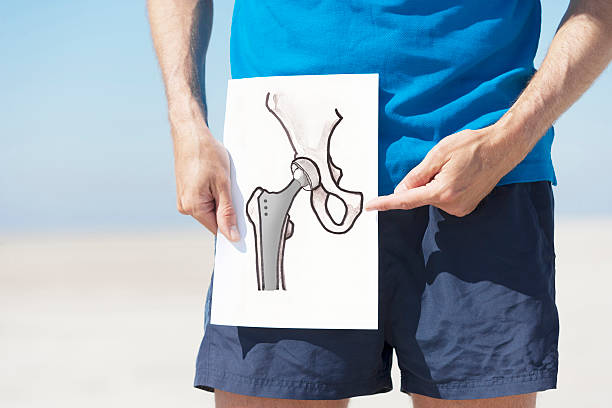 Arthroplasty is the most common type of surgery involving the musculoskeletal system, and its goal is to restore the normal function of a damaged or degenerated joint. Hip replacement, total or partial knee replacement, shoulder replacement, etc. are just a few of the many joint replacement procedures available today.
Arthroplasty is the most common type of surgery involving the musculoskeletal system, and its goal is to restore the normal function of a damaged or degenerated joint. Hip replacement, total or partial knee replacement, shoulder replacement, etc. are just a few of the many joint replacement procedures available today.
During a joint replacement procedure, damaged bone and cartilage are surgically removed and replaced with artificial pieces made of metal, plastic, or carbon-coated implants. These replacements are often painless and help restore joint mobility.
The Advantages of Joint Replacement
- It eases pain
- It restore movement
- It modifies the overall appearance by correcting any misalignment.
- It helps to enhance overall performance
Joint Replacements
Hip and knee replacements are the two most prevalent types of joint surgery. However, other joints besides the hips and knees can undergo replacement surgery.
-
Hip Replacement
There are two types of hip replacement surgery: total and hemi (half). The acetabulum and femoral head are both treated during a total hip replacement. Hemiarthroplasty is a procedure in which only the femoral head is replaced.
-
Knee Replacement
The knee is the biggest and most complicated joint in the body. It connects the major limbs and supports the whole body’s weight. It is prone to a variety of injuries and illnesses. Treatment options for knee injuries range from repairing a torn ACL to microfracture surgery and total knee replacement.
-
Ankle Replacement
If significant arthritis has set in at the ankle, orthopedic foot and ankle surgeons may recommend a technique called Total Ankle Arthroplasty (TAA).
-
Elbow Replacement
Implants are attached to the patient’s arm bones in order to create a new artificial joint that functions like the natural one at the elbow. The implants are connected by a metal and plastic hinge.
-
Wrist Joint Replacement
In a wrist joint replacement, the damaged or worn-out parts of the patient’s wrist bones are removed and replaced with artificial ones.
-
Shoulder Replacement
The deltopectoral technique is used to replace a shoulder joint while preserving the deltoid muscle. In really severe cases, a reverse total shoulder replacement may be necessary.
Total Joint Replacement Surgery
Damaged joints can be replaced with artificial implants in a technique known as total joint replacement (arthroplasty). This surgery helps to relieve joint pain and improve mobility. Specialists recommend this procedure for patients with significant injuries or advanced stages of arthritis.
Traditional definitions of arthroplasty describe the procedure as one in which metal prostheses are used to replace damaged bone and articular cartilage in a joint. Now that biomaterials, designs, and surgical techniques have progressed, joint replacement surgery can be performed without removing any of the patient’s natural bone or cartilage. So, more of the body’s natural tissues can be kept intact, and people can take advantage of mechanical qualities that were not available before.
Conclusion
Patients with severe joint pain or injuries now have a new option in the form of joint replacement surgery. These surgical techniques are more successful than ever thanks to recent medical developments. Don’t hesitate to seek advice from a medical professional on how to address your joint pain if you’re experiencing any.





